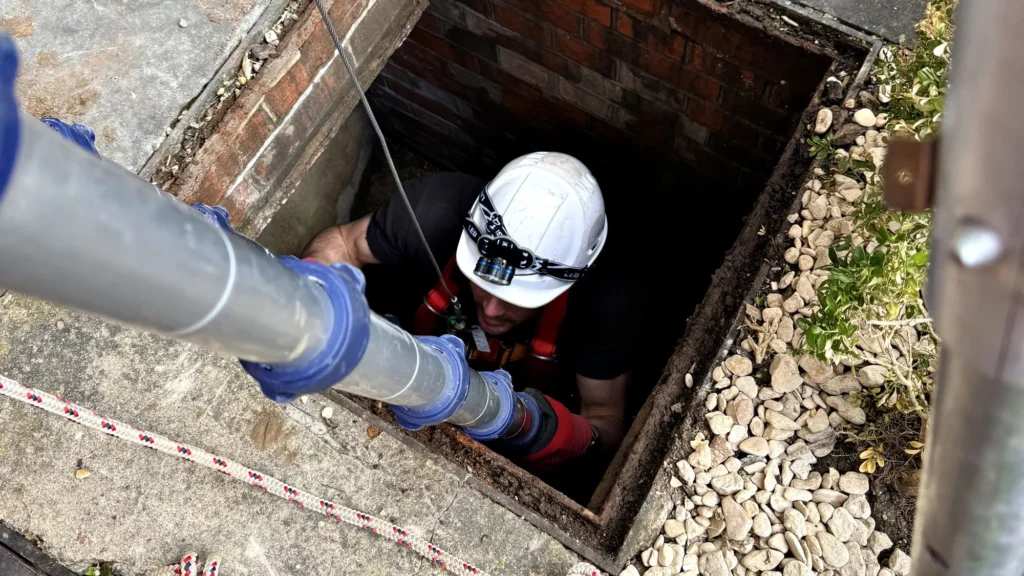Introduction
- Conducting pipeline surveys in hazardous locations presents significant challenges that require meticulous planning, specialized equipment, and expert safety protocols. Whether the survey is taking place in remote deserts, steep mountains, or offshore environments, understanding the risks and utilizing the right technology is essential for ensuring safety and efficiency. This guide will walk you through the critical steps for safely conducting pipeline surveys in these challenging settings, from choosing the right survey methods to implementing effective safety measures.”1. Understanding Pipeline Surveys (Approx. 1,500-2,000 words)
- Definition and purpose of pipeline surveys
- Types of surveys (e.g., geophysical, visual, ultrasonic, etc.)
- Importance in maintaining pipeline integrity and ensuring environmental safety
2. Key Risks in Hazardous and Remote Locations.
- Identifying potential hazards (e.g., unstable terrain, weather conditions, wildlife, toxic chemicals)
- Challenges of working in remote areas (e.g., accessibility, communication issues, logistical difficulties)
- Environmental and human risks

3. Planning and Preparation for Surveys.
- Site assessment and risk analysis
- Regulatory considerations (e.g., permits, compliance with safety regulations)
- Selecting survey methods based on terrain and environment
- Preparing the team and equipment for the conditions
4. Choosing the Right Technology and Equipment.
- Latest technologies for pipeline surveys (e.g., drones, remote sensing, GIS, GPS)
- Choosing the right surveying tools for hazardous and remote conditions
- Advancements in automated technology for efficiency and safety
5. Safety Protocols for Hazardous and Remote Locations.
- Personal protective equipment (PPE) required for different hazardous conditions
- Emergency response plans and evacuation protocols
- Safety training and certifications for the survey team
- Establishing communication systems in remote areas
6. Surveying Techniques for Remote and Hazardous Areas .
- Techniques for surveying in difficult terrain (mountains, forests, deserts, offshore)
- Dealing with extreme weather conditions (heat, cold, storms)
- Managing wildlife and environmental challenges (dangerous animals, environmental protection)
7. Data Collection and Analysis in Remote Areas.
- Best practices for accurate data collection
- Handling data transmission in areas with limited connectivity
- Using technology to overcome connectivity challenges
- Data analysis tools and techniques for remote survey results

8. Case Studies and Real-World Applications.
- Examples of successful pipeline surveys in hazardous and remote locations
- Lessons learned from failures or incidents in the field
- Insights from experts and industry leaders
9. http://ENVIRONMENTAL MITIGATION AND PREVENTIONMitigating Environmental Impact during Surveys.
- Environmental considerations during pipeline surveys
- Best practices for minimizing disruption to local ecosystems
- Compliance with environmental regulations (e.g., EPA guidelines, local environmental laws)
10. Future Trends in Pipeline Surveying.
- Innovations in surveying technology (AI, machine learning, robotic systems)
- The growing role of sustainability in pipeline surveying
- Predicting the future challenges and solutions for hazardous and remote pipeline surveys
Conclusion
- Recap of best practices and safety measures
- Importance of proper planning, technology, and training
- Encouragement to prioritize safety and efficiency in every survey
Final Touches:
- Internal Linking: Link to related blog posts (e.g., “Top Pipeline Surveying Techniques” or “Latest Technologies in Pipeline Maintenance”).
- External Linking: Reference reputable sources and safety guidelines (e.g., OSHA, American Pipeline Contractors Association).
- Call to Action: Encourage readers to get in touch for professional consulting or to access more resources about pipeline surveys.
- Images and Diagrams: Include visuals, such as flow charts, photos of surveying equipment, or diagrams explaining survey techniques.
This structured approach will help create an informative, SEO-optimized, and user-friendly blog post that covers all critical aspects of safely conducting pipeline surveys in hazardous and remote locations.
